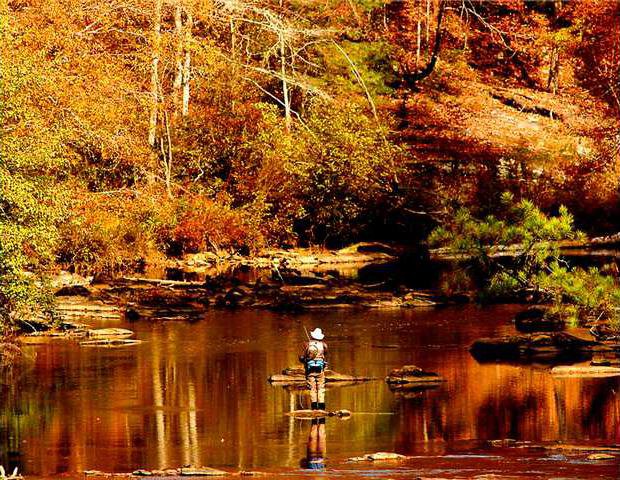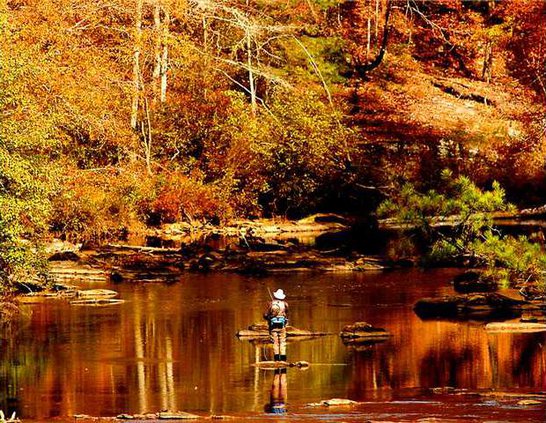What kind of leaf is that?
As you drive into the mountains, you can’t help but notice the distinctive reds and golds that adorn some trees. While some trees are named after the fall color they produce, others simply put on a show for a week or two. Here are some common fall leaf colors and the trees they correspond with.
Red leaves
Red is produced by warm, sunny fall days and cool fall nights. Leftover food in the leaf is transformed into red or anthocyanin pigments. These red pigments also color cranberries, red apples, blueberries, cherries, strawberries, and plums.
Found on: Some maples, some oaks, some sweetgum, dogwood, black Tupelo, sourwood, persimmon, some sassafras.
Yellow and orange leaves
Deep orange is a combining of the red and yellow color making process. These yellow and orange pigments also color carrots, corn, canaries and daffodils, as well as egg yolks, rutabagas, buttercups and bananas.
Found on: Hickory, ash, some maples, yellow-poplar (tulip tree), some oaks (white, chestnut, bear), some sassafras, some sweetgum, beech, birch, sycamore.
Why do leaves turn colors in the fall?
All leaves start the summer green, filled with chlorophyll. The green pigments from chlorophyll mask out the color of any other pigments that may be in the leaf.
But as autumn comes, chlorophyll in the leaves begins to deconstruct, causing the other colors to become exposed. These colors become the markers for the different species of trees.
Compiled by Kristen Morales; Source: forestry.about.com
Although the first day of fall was officially in September, for many people the season doesn’t start until the leaves on trees begin changing colors.
While a few leaves have started shedding their green hue, the overall timeline for the transition depends on many factors, officials say.
“There are so many variables, so it is very hard to predict. The temperature at night is a big factor, and so is the amount of rain received and the state of trees for the entire season,” said Cynthia Taylor, natural resource manager at Elachee Nature Science Center in Gainesville.
“This year, it’s hard to predict what will happen. We weren’t in a drought this year, but we were (under drought conditions) for many years previous to this one. Many of the trees were affected by the drought and tend to drop their leaves earlier.”
According to Taylor, an abundance of rain could diminish the intensity of a leaf’s changing color.
“Warm days and clear, cold nights make the best leaf color. Rainy days tend to wash out leaf color,” said Taylor.
“If we continue to have a lot of rain, it could diminish the intensity of color, but we’ve been having some nice cool weather, so that could help out some.”
According to forestry experts, leaves are green in the spring and summer because of the presence of chlorophyll, a chemical that uses sunlight to produce food for plants. In the fall, the chlorophyll breaks down and the green color disappears, making way for the fall foliage colors.
Depending on where you are in Georgia, fall leaves can be seen in various shades and combinations of yellow, red and purple.
Although leaves usually begin to change color in early October, Georgia State Park officials say that the best colors show up in late October to early November.

